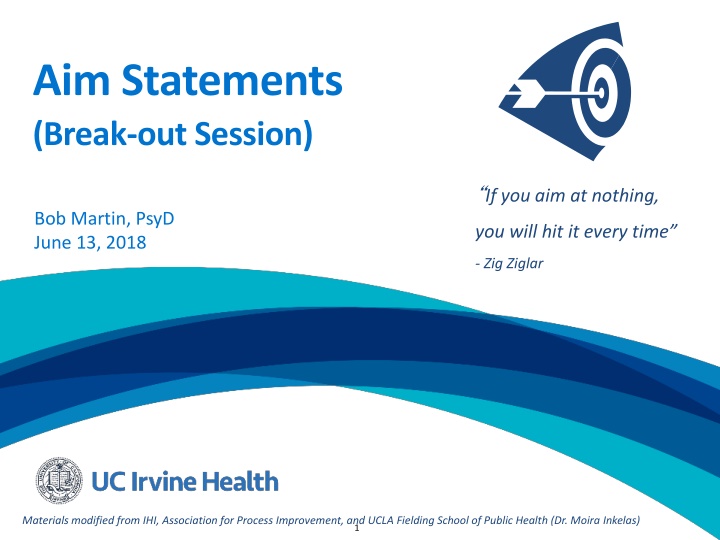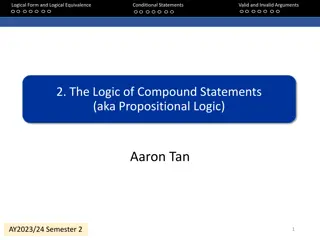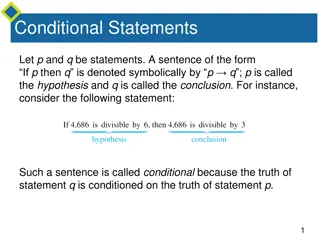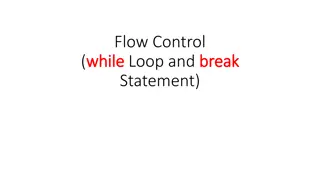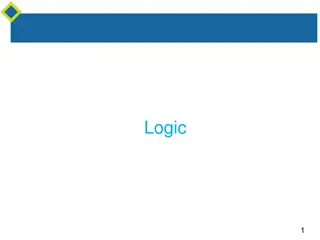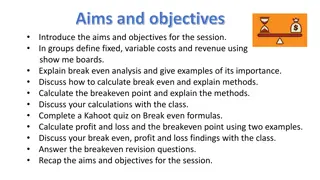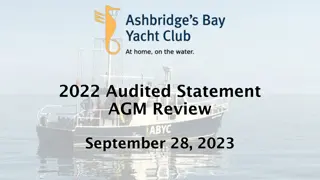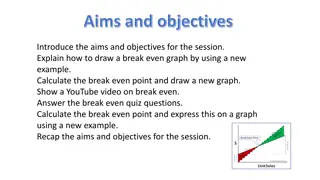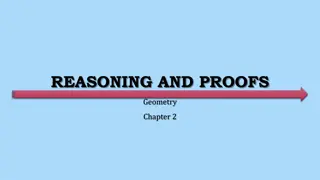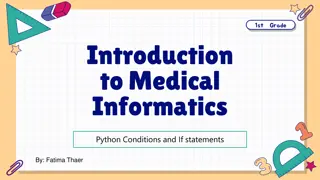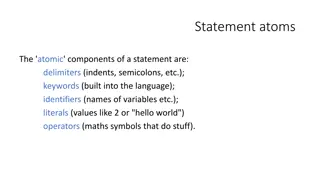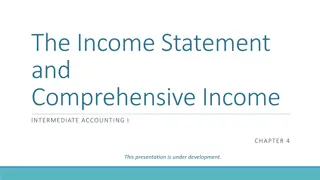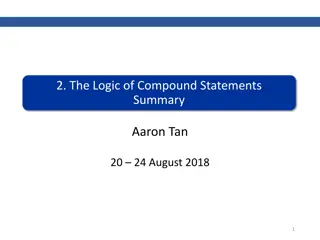Aim Statements Break-out Session Insights
The relevance of aim statements and their incorporation into PDSA, identifying good and bad aim statements. Delve into Deming's Theory of Knowledge and Improvement and the Structured Approach Model for Improvement."
Download Presentation

Please find below an Image/Link to download the presentation.
The content on the website is provided AS IS for your information and personal use only. It may not be sold, licensed, or shared on other websites without obtaining consent from the author.If you encounter any issues during the download, it is possible that the publisher has removed the file from their server.
You are allowed to download the files provided on this website for personal or commercial use, subject to the condition that they are used lawfully. All files are the property of their respective owners.
The content on the website is provided AS IS for your information and personal use only. It may not be sold, licensed, or shared on other websites without obtaining consent from the author.
E N D
Presentation Transcript
Aim Statements (Break-out Session) If you aim at nothing, Bob Martin, PsyD June 13, 2018 you will hit it every time - Zig Ziglar Materials modified from IHI, Association for Process Improvement, and UCLA Fielding School of Public Health (Dr. Moira Inkelas) 1
Intro Recap Cavemen Stormtroopers Spiders Innovative Baby Clothes Sheep & Wolves Video! Important Words 2
Objectives for the AIM break-out session Understand how Aims, Measures, and Ideas relate Understand how it is incorporated into PDSA Identify good & bad Aim Statements Write an Aim Statement 3
Theory of Knowledge Partial (Deming) Knowledge that is basic to the things we do in life. Professional knowledge (Medicine, Dentistry, Nursing, etc.) Subject Matter Knowledge The interaction of the theories of systems, variation, knowledge, and psychology. Profound Knowledge Source: Langley, G., Nolan, K., Nolan, T., Norman C., Provost, L. The Improvement Guide: A Practical Approach to Enhancing Organizational Performance. San Francisco: Jossey-Bass Publishers, 2009. 4
Theory of Knowledge & Improvement Deming Improvement: Combining subject matter knowledge and profound knowledge in creative ways to develop effective changes for improvement. This is why trying to accomplish improvement is not easy Subject Matter Knowledge This is also why you need a structured approach Improv ement Improvement Profound Knowledge Source: Langley, G., Nolan, K., Nolan, T., Norman C., Provost, L. The Improvement Guide: A Practical Approach to Enhancing Organizational Performance. San Francisco: Jossey-Bass Publishers, 2009. 5
Model for Improvement (Structured Approach) What are we trying to accomplish? How will we know that a change is an improvement? Aim Measures What change can we make that will result in improvement? Ideas Act Act Plan Plan PDSA Cycle Cycles of small-scale tests, building sequentially on a promising idea. The goal is to learn what works, without disrupting the system or requiring consensus to get started Study Study Do Do Source: Langley, G., Nolan, K., Nolan, T., Norman C., Provost, L. The Improvement Guide: A Practical Approach to Enhancing Organizational Performance. San Francisco: Jossey-Bass Publishers, 2009. 6
Model for Improvement: Aim Aim What are we trying to accomplish? How will we know that a change is an improvement? Measures What change can we make that will result in improvement? Ideas Act Act Plan Plan Study Study Do Do 7
Aim Statements & Lean Principles The output should be defect free. The product or service is delivered in response to customer need (pull, on demand). The response is immediate. 1:1 binary communication and hand-offs Work is done without waste. Work is done safely. Work is done securely 8
Aim Statements without Lean Principles A small car drives into the water. What is our Aim? 9
Aim Statements without Lean Principles So far so good what could possibly go wrong? 10
Aim Statements without Lean Principles So a new crane is brought in 12
Aim Statements without Lean Principles Whoops! Disclaimer (sadly, according to Snopes.com, this last one was photoshopped) https://www.snopes.com/fact-check/a-series-of-unfortunate-events/ 13
Aim Statements What they do: What they should include: Answers and clarifies What What is expected to happen are we trying to accomplish? The system to be improved or Creates a shared language to the population of patients communicate about the Specific numerical goals project Time frame Facilitates a framework for Guidance for activities, such experimentation, as strategies for the effort, or understanding, and learning limitations 14
Aim Statements use the SMAART Method Do to What From X to Y By When Specific (Simple Version) Increase Patient Satisfaction from 75 to 80% by December 2018 Measurable Actionable or Achievable (Detailed Version) In order to improve Patient Satisfaction, we will conduct PDSA cycles to increase CG-CAHPS Recommend This Provider Top Box (9 or 10) at Clinic X from 75 to 80% by December 15th, 2018 Relevant Timely 15
Now it is your turn! Think of a clinical Do to What From X to Y By When quality or operational (Simple Version) Increase Patient Satisfaction from 75 to 80% by December 2018 improvement that you (Detailed Version) In order to improve Patient Satisfaction, we will conduct PDSA cycles to increase CG-CAHPS Recommend This Provider Top Box (9 or 10) at Clinic X from 75 to 80% by December 15th, 2018 would like to make Work with your peers or table You will have 5 minutes Then we will share 16
Model for Improvement: Measures Aim What are we trying to accomplish? How will we know that a change is an improvement? Measures What change can we make that will result in improvement? Ideas Act Act Plan Plan Study Study Do Do 17
Measures tell us: If we are making progress toward our overall Aim Whether or not something we are trying (PDSA cycles) will lead to improvement If improvement in one area is negatively impacting another part of the system Ways to focus improvement and refine changes 18
Measures: Research vs. Improvement Purpose of Measurement Research Comparison or Accountability Improvement What is the truth? Are we better or worse than ? Are we getting better? Key question Penalty for being wrong Misdirection for the profession Misdirected reward, penalty, resources Misdirection for an initiative Measurement requirements and characteristics Complete, accurate, controlled, glacial pace, expensive Risk adjusted, with denominators, attributable to individuals or orgs, validity Real time, raw counts, consistent operational definitions, utility Typical displays Comparison of control and experimental populations Performance relative to benchmarks and standards Run charts, control charts, time between events Adapted from Solberg,Mosser, McDonaldJt Comm J Qual Improv. 1997 Mar;23(3):135-47. 19
Measures: Types to Include Outcome Measures Are the patients better? Are the patients having a better experience? Process Measures Are we doing the work we are supposed to be doing to improve outcomes? Balancing Measures As we do our improvement work, what is our impact on the rest of the system? (and identification of unintended consequences) Adapted from Solberg,Mosser, McDonaldJt Comm J Qual Improv. 1997 Mar;23(3):135-47. 20
Measures: Asthma Example Use of appropriate Anti-Inflammatory Meds Written Action Plan Symptom Free Days Adapted from Solberg,Mosser, McDonaldJt Comm J Qual Improv. 1997 Mar;23(3):135-47. 21
Model for Improvement: Ideas Aim What are we trying to accomplish? How will we know that a change is an improvement? Measures What change can we make that will result in improvement? Ideas Act Act Plan Plan Study Study Do Do 22
Ideas: The best available evidence Knowledge & creativity of front line workers (engage them!) Experiences of experts and those in the field Ask your clients Identify something that really bothers everyone Identify something that everyone is excited about Observe where there are bottle necks in the process Successes of other organizations (adapt them) 23
Model for Improvement: PDSA Plan Act Plan to carry out the ideas cycle (who, what, where, when) Plan for Data Collection What changes are to be made? Next cycle? Study Do Complete the analysis of the data Compare data to predictions Summarize what was learned Carry out the plan Document problems and unexpected observations Begin analysis of the data 24
How many PDSA Cycles? How did WD-40 get its name? In 1953, chemist Norm Larsen created, on his 40th try, a formula to stop corrosion by displacing moisture. Hence the name Water Displacement, 40th attempt). 25
How many PDSA Cycles? Negative results on the fish. Let s try rubbing two sticks together. 26
How many PDSA Cycles? I have not failed 1,000 times. I have successfully found 1,000 ways not to do it. Negative results are just what I want. They re just as valuable to me as positive results. I can never find the thing that does the job best until I find the ones that don t. - Thomas Edison 27
PDSA Cycles https://www.youtube.com/watch?feature=pla yer_embedded&v=jsp-19o_5vU 28
Rememberit is about learning Changes that result in improvement A P S D A S P D Implement the change A S P D Test new conditions A P S Theories, hunches, & best practices More Testing D Small Scale 29
Where should you start? Readiness to Make the Change Current Situation Resistant Indifferent Ready Cost of failure is large Very Small Scale Test Very Small Scale Test Very Small Scale Test Low Confidence that current change idea will lead to Improvement Cost of failure is small Very Small Scale Test Very Small Scale Test Small Scale Test Cost of failure is large Very Small Scale Test Small Scale Test Wide Scale Test High Confidence that current change idea will lead to Improvement Cost of failure is small Small Scale Test Wide Scale Test Implement Source: The Improvement Guide, Langley et al. 2009, p 10 30
Questions? If you aim at nothing, you will hit it every time - Zig Ziglar 31
Example 32
Example of a Testing Cycle Los Angeles County Departments of Public Social Services Child Support Services Children and Family Services City of Los Angeles
What are parents experiencing now? % of parents reporting depression: 19% % of parents reporting being asked about depression in past year: 50% (Source of information: Community survey) Change Idea: Ask our clients if they need support for depression Are we ready to implement? How do we raise the topic of depression? How do we fit this question into our workflow? How can we reliably respond (have something to offer) if the parent wants support?
Are We Ready to Implement? Deciding on the Scale of the Testing Readiness to Make the Change Current Situation Not Ready Indifferent Ready Cost of failure is large Very Small Scale Test Very Small Scale Test Very Small Scale Test Low Confidence that current change idea will lead to Improvement Cost of failure is small Very Small Scale Test Very Small Scale Test Small Scale Test Cost of failure is large Very Small Scale Test Small Scale Test Wide Scale Test High Confidence that current change idea will lead to Improvement Cost of failure is small Small Scale Test Wide Scale Test Implement Source: The Improvement Guide, Langley et al. 2009, p 10
Planning for Multiple PDSA Cycles Other questions How to ask the question How to respond (linkage) When to ask the question Source: The Improvement Guide, Langley et al. 2009, p 10
Question: Will clients react well to being asked about depression? Prediction: Clients will not mind being asked. Plan: One staff member from each of two departments will ask clients one of the two items from the PHQ-2 depression screener. Do: Each staff member will ask one client, next Tuesday. Study: Both clients answered the question readily. One client shared that it showed we care about how she s doing. The wording of the item seemed formal instead of conversational so it didn t really fit into the nature of the discussions we were having. Act: We will create a 2 sentence script to explain why we are asking about depression. Instead of reading the item, we will put the question into our own words. Also, we will ask the question at the end of the encounter, not at the beginning or middle, as more of a wrap up question. We predict that this way, the question will seem more empathic. On Thursday, two staff members will each test with 2 clients. 37
Examples of learning cycles for asking clients if they need support for depression 100% 80% 60% 40% 20% 90% of clients are asked about depression 7 6 0% 5 3 4 2 1 J A S O N D J F M A M J J A S O N D J F M A M J J A S O N D 2011 2012 2013 Our measure tracks the impact of improvement cycles D P Cycle 7: All staff begin the protocol; analyze failures D A S P S A D S Cycle 6: All staff begin the protocol S P A D A Cycle 5: Week 5: Document the protocol (2 sentence script, and question wording) P S A A Cycle 4: Week 4: Test variation for asking the question to ask in the same and best way D P IDEA: Asking all clients about depression will identify people needing support S P Cycle 3:Week 3: Client responds but flow isn t right; two staff asks clients at end of the visit A P D Cycle 2: Week 2: Two staff ask clients, using a 2-sentence script and a question in their own words S D Cycle 1: Week 1: Two staff ask one client each, using PHQ-2 item
100% 80% 60% % asked about depression 40% 20% 0% J A S O N D J F M A M J J A S O N D J F M A M J J A S O N D 2011 2012 2013 100% 80% % discussed local resources for social support 60% 40% 20% 0% J A S O N D J F M A M J J A S O N D J F M A M J J A S O N D 2011 2012 2013
Magnolia? Place? Community? Initiative? Run? Charts? -? County? Suite Example: Los Angeles County departments 4/28/13 %? received? empathic? care? %? received? help? with? income/finances? Goal? target? for? measure 100%? 100%? 2011 2012 Jul Aug SeptOct Nov Dec Jan Feb Mar Apr MayJun Jul Aug Sep Oct Nov Dec 14 12 12 12 12 11 13 15 8 4 3 3 3 3 3 3 4 2 6 6 6 6 6 5 6 9 3 4 3 3 3 3 3 4 2 3 ? ? Refers? to? care? received? during? today's? visit County? Suite CSSD DPSS DCFS 14 3 8 3 10 3 4 3 18 5 13 0 9 3 3 3 10 0 2 8 8 0 8 0 17 6 5 6 9 2 2 5 80%? 80%? 60%? 60%? 40%? 40%? 20%? 20%? Health'care:''Refers& to& care& in& today's& visit,& or& the& last& 12& months& (depression)& Child'care:''Care& in& the& past& 3& months& Family'Support'&'Linkage'Agencies:''Care& in& today's& visit;& for& Linkage& Agencies,& items& on& finances,& concerns,& stressors,& depression& refer& to& staBng& sources& of& help& 0%? 0%? J? A? S? O? N? D? J? F? M? A? M? J? J? A? S? O? N? D? J? F? M? J? A? S? O? N? D? J? F? M? A? M? J? J? A? S? O? N? D? J? F? M? 2011? 2012? 2013? 2011? 2012? 2013? %? discussed? resources? for? families? %? discussed? resources? for? social? support? %? discussed? reading? 100%? 100%? 100%? ? 80%? 80%? 80%? 60%? 60%? 60%? 40%? 40%? 40%? 20%? 20%? 20%? 0%? 0%? 0%? J? A? S? O? N? D? J? F? M? A? M? J? J? A? S? O? N? D? J? A? S? O? N? D? J? F? M? A? M? J? J? A? S? O? N? D? J? A? S? O? N? D? J? F? M? A? M? J? J? A? S? O? N? D? 2011? 2012? 2011? 2012? 2011? 2012? %? asked? about? child? development? concerns? %? asked? about? family? stressors? %? asked? about? depression? 100%? 100%? 100%? 80%? 80%? 80%? 60%? 60%? 60%? 40%? 40%? 40%? 20%? 20%? 20%? 0%? 0%? 0%? J? A? S? O? N? D? J? F? M? A? M? J? J? A? S? O? N? D? J? A? S? O? N? D? J? F? M? A? M? J? J? A? S? O? N? D? J? A? S? O? N? D? J? F? M? A? M? J? J? A? S? O? N? D? 2011? 2012? 2011? 2012? 2011? 2012?
